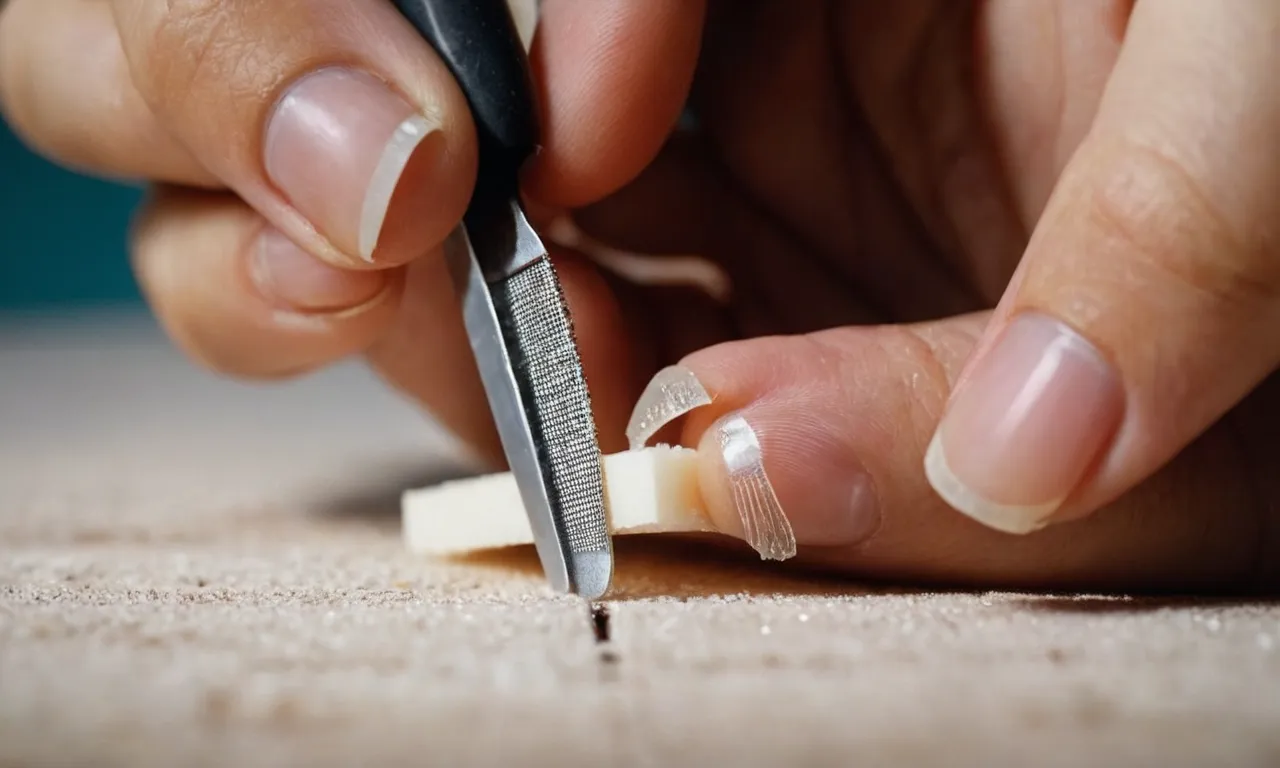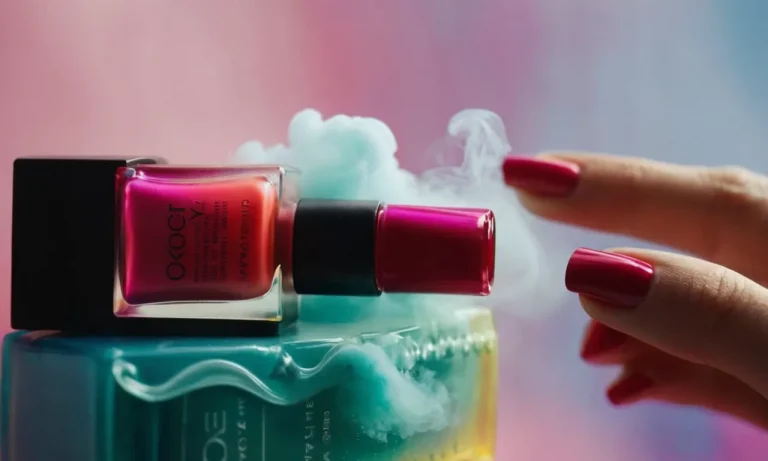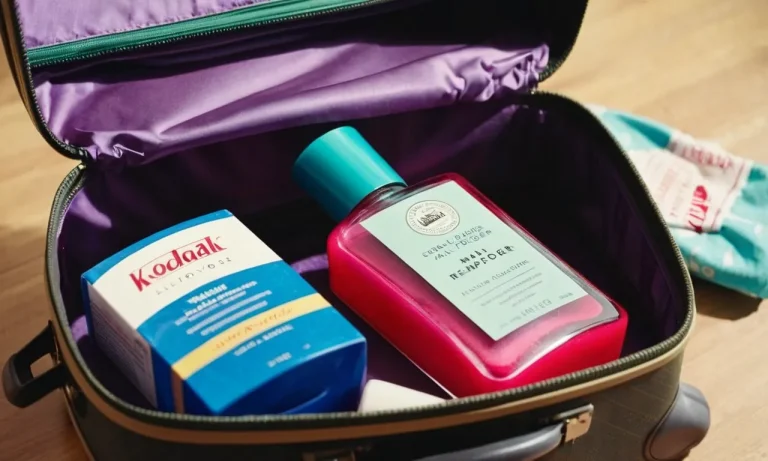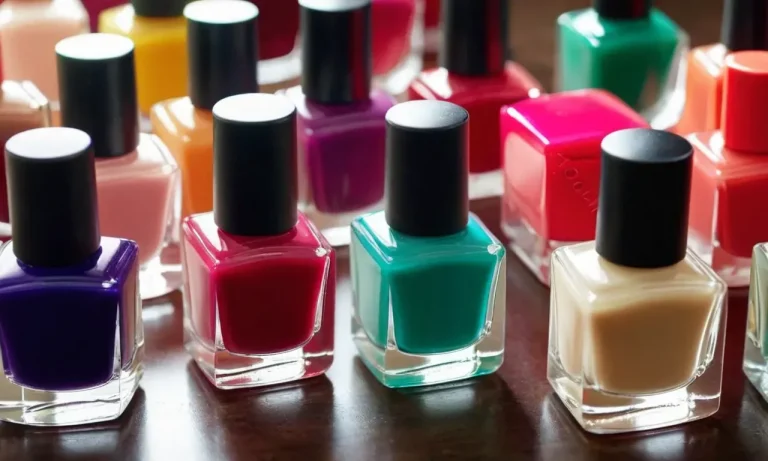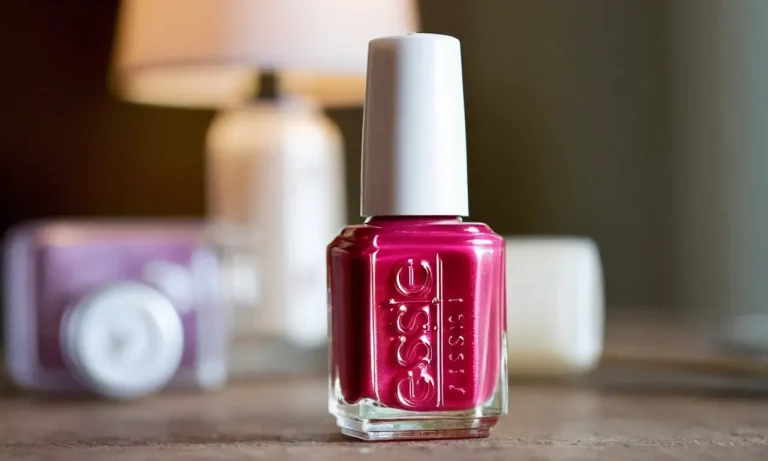How To Fix A Broken Toe Nail
Dealing with a broken toe nail can be extremely painful and frustrating. If you’ve ever experienced a broken or cracked toenail, you know how annoying it can be when it catches on socks or shoes. Thankfully, there are several things you can do at home to help fix and heal a broken toenail.
If you’re short on time, here’s a quick answer to your question: To fix a broken toe nail, trim the nail above the break, smooth the edges with a file or sandpaper, apply petroleum jelly to keep the nail moisturized, and cover it with a bandage until the nail grows out.
Avoid wearing tight shoes and socks, and see a doctor if there are signs of infection.
Trim and File the Broken Nail
Trim above the crack or break
When you have a broken toenail, it’s important to trim it properly to allow it to heal. Here are some tips for trimming a broken toenail:
- Sterilize nail clippers with rubbing alcohol or boil in hot water for 10 minutes. This helps prevent infection.
- Trim the nail above where it is cracked or broken, usually a few millimeters above. Don’t cut too close to the base of the nail bed.
- Trim straight across, avoiding rounding the edges. Rounding can put stress on the corners of the nail.
- Make the trim as even as possible. Uneven trimming can lead to ingrown toenails.
- Trim any jagged edges sticking out from the break to smooth it out.
Properly trimming the nail above the break creates a smooth edge that will not catch on socks or irritate the skin as it grows out. Cutting into the break line weakens the nail further. Leave some nail to protect the nail bed as it heals.
Smooth rough edges
After trimming the broken toenail, gently file any remaining rough edges with an emery board or nail file. File in one direction, not back and forth. This helps prevent cracking or peeling of the nail. Filing creates a smooth edge that won’t snag or tear.
Avoid using metal nail files as they can damage the nail bed if used too aggressively. Focus filing on the edges, not the surface of the nail. Filing the surface too much can weaken it. Use a light touch and don’t file into the corners of the nail.
You can soak the nail in warm water to soften it before filing. This makes the filing process easier and smoother. Thoroughly dry the nail and apply an antiseptic ointment after filing to protect against infection.
Avoid cutting the nail too short
It’s important not to trim the broken nail too short. The nail should extend just slightly over the tip of the toe. Cutting it too short can lead to several problems:
- Increased risk of infection – The nail helps protect the delicate nail bed underneath.
- Ingrown toenails – Cutting the nail too short encourages the edges to dig into the skin and become ingrown.
- Repeated trauma – A shorter nail is more likely to catch on socks, get bumped, and break again.
Leave at least a couple millimeters of nail past the end of the toe. The nail should not be flush with the toe tip. Allowing some nail overhang provides a buffer as the nail grows out. It also reduces pressure on the nail bed.
If trimmed too short, seal the nail with an antiseptic liquid bandage to protect it. Coat the nail bed as well. Avoid soaking the nail or irritating it further until some regrowth occurs.
Keep the Nail Moisturized
Keeping your broken toenail properly moisturized is crucial for healing. Dry, cracked nails can snag on socks leading to further injury. Using moisturizers helps soften the nail, prevents cracking, and creates an environment that promotes healing.
Apply Petroleum Jelly
Petroleum jelly (Vaseline) is an ideal moisturizer for a broken toenail. Its thick texture coats the nail and locks in moisture. Research shows petroleum jelly enhances wound healing by protecting wounds from irritation and infection (source). Apply a thick layer 1-2 times per day.
Avoid Harsh Chemicals
Avoid products with harsh chemicals like acetone or formaldehyde, as these can dry out and damage the nail bed. Also skip soap-based cleansers as the surfactants strip natural oils. Instead, use gentle oil-based cleansers when washing the area.
Consider Olive, Coconut or Vitamin E Oil
Natural oils also make excellent toenail moisturizers. Extra virgin olive oil contains antioxidants that accelerate healing (source). Coconut oil has antimicrobial properties to prevent infection (source). Vitamin E oil repairs damage by increasing blood circulation.
For best results, apply your preferred oil after showering, and cover with a bandage overnight. The oil will penetrate the nail and soften any hard, cracked areas by morning. Continue this daily until the nail has fully regrown.
Protect the Nail While It Heals
Cover with a bandage
Covering the broken toe nail with a bandage is crucial to protect it while it heals. Here are some tips for bandaging a broken nail properly:
- Clean the nail and toe first with mild soap and water to prevent infection.
- Apply an antibiotic ointment like Neosporin to the nail bed to prevent bacteria from entering.
- Cut a small piece of gauze or a soft bandage and place it over the nail, securing it with medical tape or a self-adhesive bandage.
- Make sure the bandage is not too tight – it should protect the nail without cutting off circulation to the toe.
- Change the bandage daily and apply more ointment each time to keep the area moist and prevent infection.
Keeping the nail covered with a properly applied bandage will protect it from further trauma as the nail grows out. Be sure to change the bandage and check for signs of infection regularly.
Wear open-toed shoes
Wearing open-toed shoes or sandals can help take pressure off of a broken toe nail while it heals. Closed-toe shoes may rub against the nail bed and cause further injury or pain. Some tips for choosing footwear while recovering from a broken nail:
- Opt for shoes with a wide, open toe box area to avoid friction against the bandaged nail.
- Avoid tight shoes that may squeeze the toe and put pressure on the nail.
- Choose shoes with straps or adjustable fasteners so you can control the fit.
- Consider wearing sandals which leave the toe area entirely open and uncovered.
- Flip flops can also work well as the thong-style strap does not put pressure across the toes.
Letting the toe breathe in open-toed shoes reduces irritation and discomfort as the nail grows out. Just be sure to wear shoes that are secure enough for normal daily activities.
Change the bandage daily
It’s important to change the bandage covering a broken toe nail every day during the healing process. Here’s why:
- It prevents bacteria buildup – Daily bandage changes keep the area clean.
- Lets you monitor healing – You can check that the nail bed looks healthy each time.
- Allows application of ointment – Applying antibiotic ointment daily prevents infection.
- Reduces moisture – A clean, dry bandage prevents fungal or yeast infections under the nail.
- Prevents debris – Changing the bandage keeps dirt, lint, etc from getting trapped under it.
Aim to change the bandage at the same time each day for consistency. It may be easiest to do it after showering or bathing when the nail bed is clean. As the nail grows out, you may be able to switch from a bandage to just using tape or a smaller dressing.
Be diligent with daily bandage changes to facilitate proper healing.
Watch for Signs of Infection
Look for redness, swelling, oozing
A broken toenail can allow bacteria to enter and cause an infection. Be on the lookout for signs of infection such as redness, swelling, warmth, increased pain, and oozing pus or fluid around the nail. These are indications that the break has become infected and you should see a doctor right away.
An infected toenail can quickly become serious if left untreated.
Some tips to help prevent infection of a broken nail:
- Keep the nail and surrounding area clean by gently washing with soap and water. Rinse and pat dry.
- Apply an antibiotic ointment like Neosporin to the nail daily.
- Cover with a bandage or adhesive bandage, changing daily.
- Wear clean cotton socks and switch them out frequently.
- Avoid getting the nail wet in public places like pools or gyms where germs can enter.
Be vigilant about checking the nail and toe for any worrisome signs. Redness, increased swelling, throbbing pain, warmth, foul odor, and green or yellow discharge are all red flags of an infected toenail that needs medical care. Don’t delay in seeing a podiatrist or doctor if these symptoms develop.
See a doctor if infected
If your broken toenail shows signs of infection like redness, swelling, oozing, and increased pain, it’s important to see a doctor right away. An infected nail can rapidly worsen and spread infection through the toe and foot if left untreated.
Seeking prompt medical care is crucial for proper diagnosis and treatment when a broken toenail becomes infected. Here’s what to expect:
- The doctor will examine the nail and ask about your symptoms.
- Lab tests may be done on any oozing fluid to identify the type of bacteria causing infection.
- If infected, you’ll likely be prescribed an oral antibiotic to treat the infection.
- The doctor may also trim and thin the nail to provide drainage and relieve pressure.
- For severe infections, the nail may need to be partially or completely removed.
- You may be instructed to soak the nail in warm water several times a day.
- Follow-up appointments will monitor how the infection is responding to treatment.
Seeking timely treatment for an infected broken nail is crucial. If the infection spreads into the toe bones or bloodstream it can have serious complications. Diabetics and those with circulation issues are at increased risk.
Don’t take chances with any signs of infection – see a podiatrist promptly for proper care.
Let the Nail Grow Out
When you break a toenail, it’s important not to remove the remaining nail or peel it off. Instead, you’ll need to let the nail grow out on its own. This allows the nail bed below to heal properly. Rushing the process by ripping off nail fragments can lead to infections or other complications.
It Takes About 6 Months for Toenails to Regrow Fully
A toenail grows very slowly, at a rate of about 1 millimeter per month. So you’ll need patience as the broken part grows out. It typically takes around 6 months before the nail has regrown completely. The new nail will likely look a bit misshapen or discolored at first.
But over time, it should regain a normal appearance.
Avoid Ripping or Peeling the Nail
As tempting as it might be, refrain from pulling at the loose nail. Removing it prematurely can disturb the fragile nail bed underneath. This vascular area contains nerve endings and live tissue that supports nail growth. Damaging this can lead to irregular nail regrowth or even permanent deformities.
Also steer clear of using chemical solvents to dissolve the nail. These products often contain ingredients like acetone which can burn or irritate skin. Stick to trimming carefully with nail clippers as the nail extends.
Trim Carefully as It Grows
Use sharp nail clippers to trim the nail as it grows out. Cutting a little bit off the end helps prevent snagging and discomfort. Be very gentle during clipping and stop if you feel any pinching or pain. It’s safest to have a doctor or podiatrist handle trimming broken toenails whenever possible.
During the regrowth period, closely monitor the nail for signs of infection like redness, swelling, oozing, foul odor, and skin warmth. See a doctor promptly if you notice infection setting in. Treating it quickly can prevent complications like cellulitis or nail loss.
Conclusion
Dealing with a broken toenail can be painful and inconvenient, but taking proper care of it at home can help it heal. Trim the nail, keep it moisturized, protect it with a bandage, and let it grow out over time. Avoid tight shoes that put pressure on the toe.
See a doctor if you notice signs of infection like swelling or redness. With some simple self-care, your broken nail should grow back healthy and normal within about 6 months.

